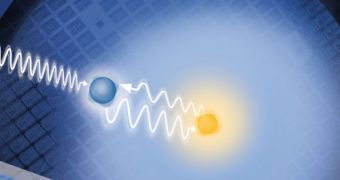A team of expert led by physicists from the University of Bristol (UB) Center for Quantum Photonics (CQP) announces the development of a new approach to conducting quantum computing.
The international collaboration is convinced that the innovation it produced will be used in the near future to create computers that can perform tremendously complex calculations and processes in just a fraction of the time even the most advanced supercomputers need today.
In addition, it is widely believed that quantum computers are also able to conduct studies that are at this point inaccessible to existing computers.
For example, modeling climate change becomes an unbreakable problem fast, due to the large number of factors involved in mathematical models seeking to predict its effects.
Similarly, modeling the way a handful of atoms interact in a chemical reaction is impossible for existing supercomputers, due to the massive number of possible events that can take place.
What the team did was develop a silicon chip that could be used to perform complex calculations and simulations using quantum particles in the near future.
“It is widely believed that a quantum computer will not become a reality for at least another 25 years,” explains the director of the CQP, UB professor Jeremy O'Brien.
“However, we believe, using our new technique, a quantum computer could, in less than ten years, be performing calculations that are outside the capabilities of conventional computers,” he adds.
“Using a two-photon system, we can perform calculations that are exponentially more complex than before,” the professor goes on to say.
“This is very much the beginning of a new field in quantum information science and will pave the way to quantum computers that will help us understand the most complex scientific problems,” O'Brien adds.
The team says that the construct they developed is made up of two light particles, called photons, which move along a series of circuits. This phenomenon is called a “quantum walk.”
What's really amazing about the new work is that this is the first time ever when a quantum walk instance was demonstrated using two individual particles.
“Our technique could improve our understanding of such important processes and help, for example, in the development of more efficient solar cells,” professor O’Brien believes.
The group, which includes experts from the Tohoku University, Japan, the Weizmann Institute,in Israel and the University of Twente in the Netherlands, published the findings in the September 17 issue of the top journal Science.

 14 DAY TRIAL //
14 DAY TRIAL //